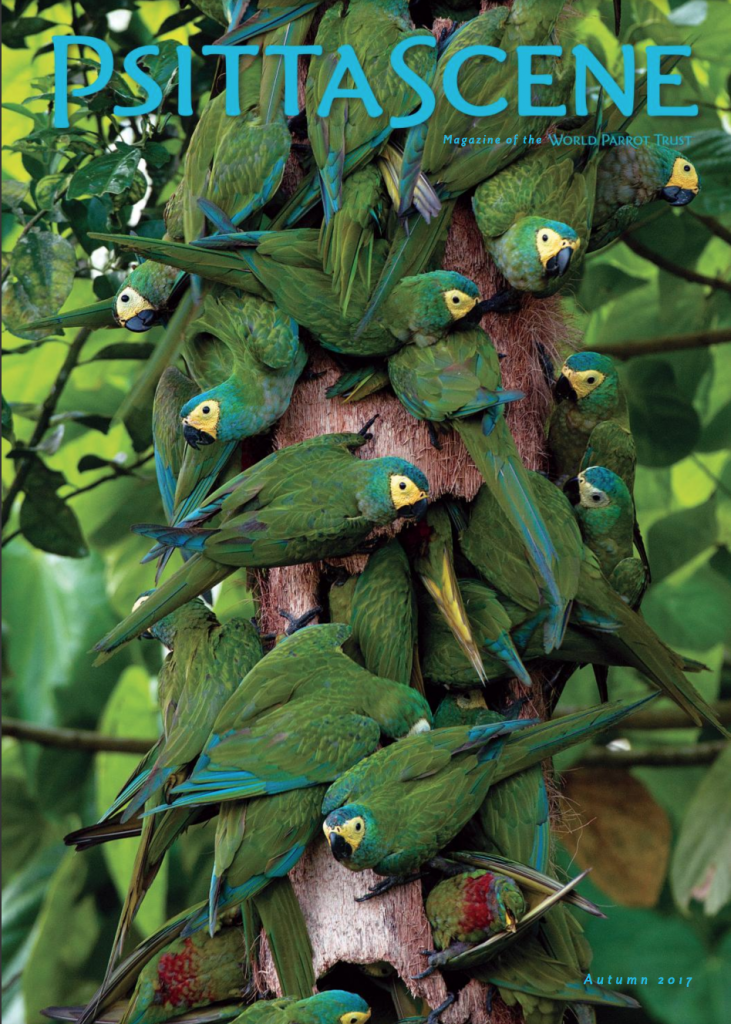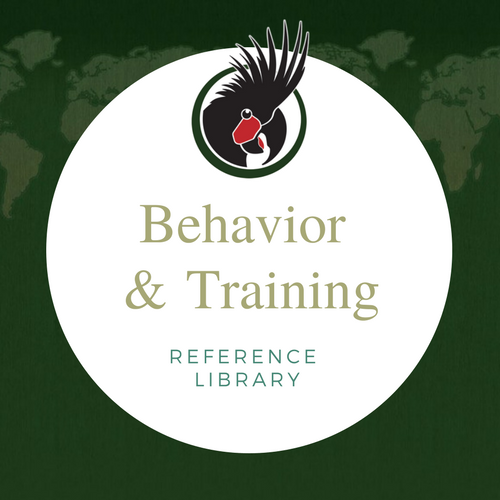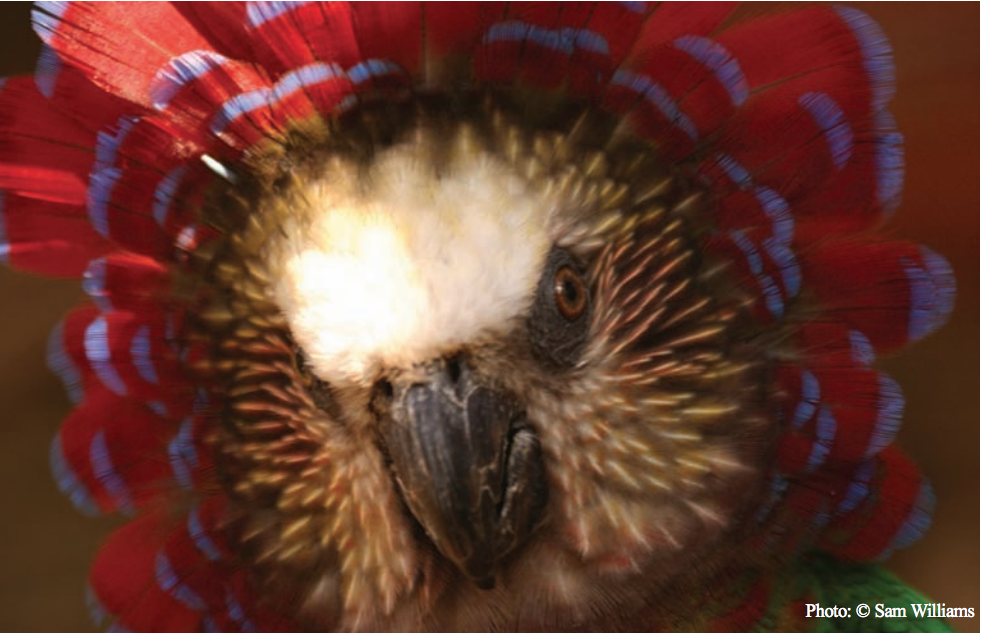
10 Things Your Parrot Wants You to Know About Behavior
Speaking for oneself is hard enough, so how does one speak for another species?
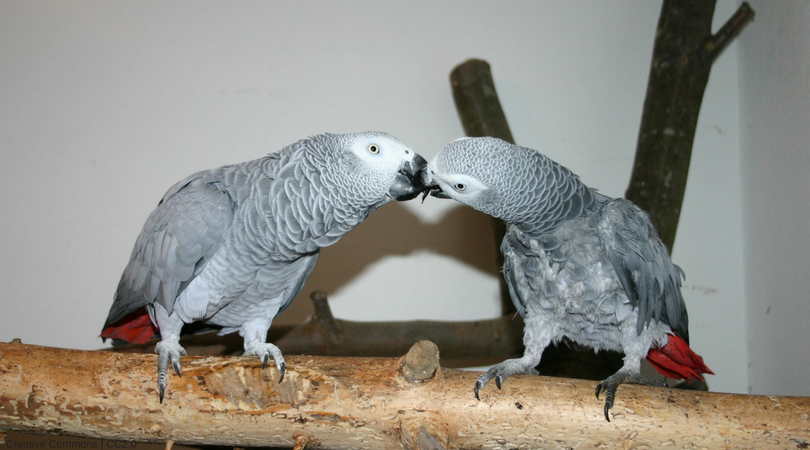
From the Spring 2008 Edition of PsittaScene Magazine. Get a free subscription with your WPT membership.
The general laws of learning and behavior from the field of behavior analysis provide an articulate voice to speak about best practices for all animals. In recent years, as the teaching technology of applied behavior analysis has become more widely known and practiced, the quality of life for companion parrots has improved by leaps and bounds. Although they may not tell you in quite this way, all parrots will benefit from caregivers who know these ten things about behavior.
1. Behavior is what a parrot does under certain conditions; behavior is not what a parrot is.
Next time you are tempted to describe a parrot with an “is-label” (such as is vicious, is dominant, is neurotic), answer these three questions instead: What does this label look like in terms of actual, observable behavior? Under what conditions does this behavior occur? What is the immediate outcome the behavior produces for the bird?
The answers to these questions will help you set clear behavior-change targets, identify the antecedent predictors in the environment that promote the behavior, and determine what consequences maintain the behavior.
For example, see how much information is gained by replacing a vague label – “My bird is vicious.” – with specific antecedent-behavior-consequence descriptions – “When I offer my hand near the cage (antecedent), my bird lunges (behavior), to get me to remove my hand (consequence).” We can’t replace “vicious” because it’s just a label, but we can replace lunging with an alternate behavior we want to see more.
2. Every behavior serves a purpose for your parrot; the purpose is the consequence the behavior produces.
Behavior is a tool parrots use to produce desired consequences (outcomes) from the environment (including the environment inside their skin). To discover the reason for a particular behavior, look at what happens right after the behavior. Outcomes generally fall into one of two categories – to get, or to get away from, particular items, events, or conditions.
The motivation to behave in a particular way today comes from the consequences the behavior produced yesterday. This is called the law of effect, which states that behavior is a function of its consequences. The law of effect describes Nature’s feedback loop. Behavior that works from the animal’s point of view is repeated and behavior that doesn’t work is modified or suppressed. For example, many parrots vocalize persistently because doing so has produced social reinforcers (human attention) in the past. The bird is a learner not a screamer.
3. Parrots naturally choose the behavior that yields the most positive consequences.
Given a choice, all animals tend to do the things that are most rewarding to them. This is called the matching law, which states that the relative rates of different behaviors (or the same behaviors in different situations) tend to match the relative rates of reinforcement they produce.
For example, if Periwinkle Parrot is reinforced for stepping up 90% of the time when John offers his hand and 40% of the time when Grace offers her hand, Periwinkle will tend to step up for John 90% of the time but only 40% of the time for Grace. The matching law has been demonstrated with many species of animals including humans. We can apply the matching law to decrease the rate of a problem behavior by supersizing the rate of reinforcement for an alternate behavior. In this way we decrease problems without resorting to punishing strategies.
4. Every parrot is an individual and has a personal point of view about what consequences motivate him or her to behave.
Reinforcers come in many different forms including tangible items, social interactions, sensory experiences, physical activities, and escape from unpleasant stimuli. The quality of an animal’s life is highly related to the rate, quality and variety of reinforcers that motivate its behavior daily. Some reinforcers are automatically rewarding like food. Other reinforcers are learned through experience via the process of repeated, close pairing with existing reinforcers. The touch of a human hand is an example of a reinforcer learned by pairing with other reinforcers like food. The ability to learn new reinforcers is another one of Nature’s clever plans. It ensures that there will always be a good reason to behave rather than be still.
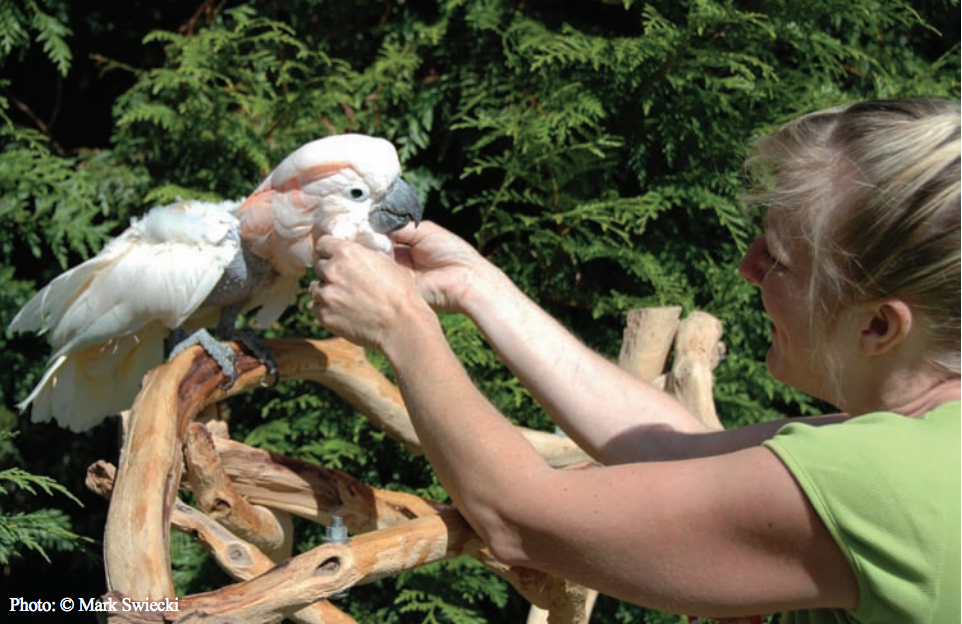
Parrots may not always seek the same consequences. Sometimes a scratch on the head is motivating, while other times only a peanut will do!
5. To learn what motivates your parrot, carefully observe favorite items, activities and people.
The label “reinforcer” describes the behavior increasing effect a consequence has on the behavior it follows. It doesn’t describe any fixed characteristics of the consequence, per se. Some consequences are reinforcing some of the time and not other times. A sunflower seed may not motivate a bird who has just eaten a bowl full of seeds and a human hand may not motivate a bird to fly who has been active all day. Knowledge about a species’ natural history, the individual’s behavioral history, and the current conditions in which the parrot lives provide important clues about what may motivate a particular bird. The best approach is to make no assumptions. When it comes to the needs of individual parrots, behavior is best understood as a study of one.
6. Increase your parrot's good behavior by delivering positive reinforcers immediately and consistently.
Perhaps the single most important consideration for highly effective reinforcement is contiguity, or closeness in time, between the behavior and the reinforcer. Speedy delivery of positive reinforcers is the clearest way to communicate the exact response that produced the rewarding outcome so that the parrot can repeat the response and earn more reinforcement. Late delivery can result in reinforcing a different response that occurs further down the ongoing behavior stream. Consistency is also very important because it communicates clearly the “if-then” contingency between the behavior and the outcome – if you step onto the perch, then you get a scratch on the head.
7. The bad news is you can unintentionally reinforce problem behaviors too.
Behaviors that are not reinforced decrease over time by the process called extinction. It follows then that every single behavior repeatedly exhibited by a parrot is reinforced in some way, including problem behaviors like wandering off a play station, biting to remove unwanted hands, and chewing the woodwork for sensory rewards. Intermittent reinforcement will produce persistent misbehavior by the very same process that produces avid gamblers. Once a problem behavior is learned, the occasional jackpot is all that is needed to maintain a behavior like screaming for attention.
It isn’t always what we do that reinforces a parrot’s problem behaviors – other birds, children, and internal sensations are some of the other usual suspects – but, in any case, unintentional reinforcement is a problem we can do something about. The most helpful question you can answer when dealing with a problem behavior is not what’s wrong with this parrot but rather, what reinforces this particular behavior. When we understand that behavior is functionally related to the context in which it occurs, we can change the context to change behavior, effectively and humanely
8. To avoid problem behaviors, arrange the environment to make the right behavior easier and more effective than the wrong behavior.
Sometimes the most positive, least intrusive way to solve a behavior problem is to remove the environmental cues that set the behavior in play in the first place. For example, moving a wellappointed play station away from the wall will reduce a parrot’s penchant for chewing the windowsill. Affixing a perch to the inside of the cage door, and teaching the parrot to stand there before opening the cage door, can reduce a parrot’s inclination to bite a hand offered deep inside its cage. It takes a keen eye to assess the many ways in which the environment we provide presents obstacles to the behavior we want our parrots to exhibit. Many simple behavior solutions are missed because we are looking “in the bird” instead of in the setting in which the behavior occurs.
Further, you can remove the reinforcer that maintains a problem behavior and the behavior will decrease because it no longer effectively produces the reinforcer.
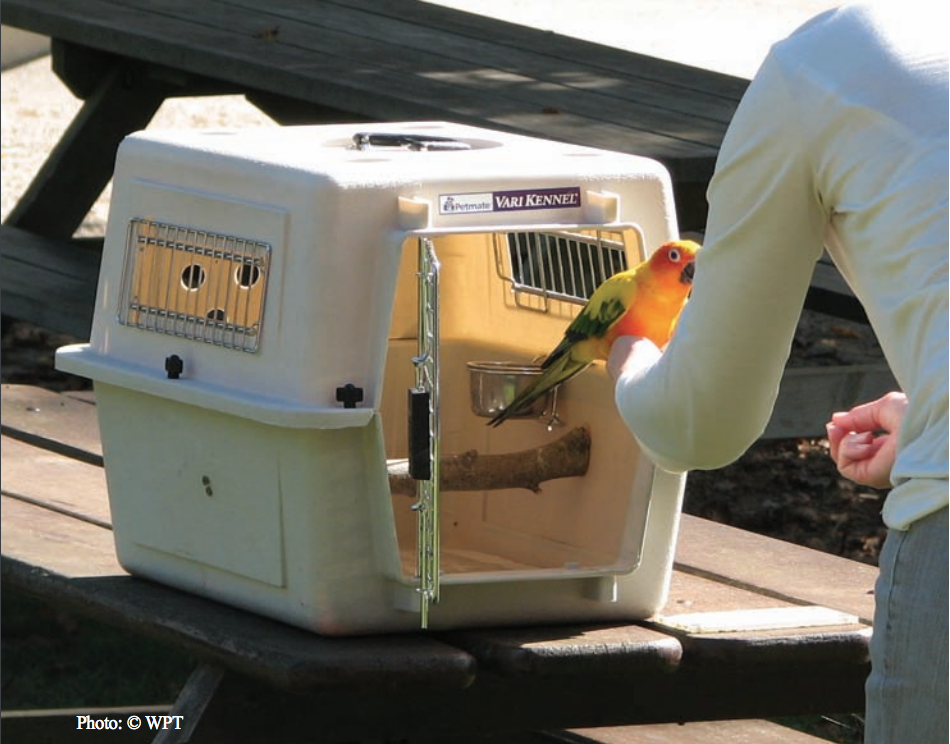
Pay attention to each small step your parrot makes towards a new behavior and have your reinforcer ready to deliver immediately!
9. Reinforce small improvements towards the final behavior goal.
You can’t reinforce a behavior that never occurs but you can teach parrots new behaviors (or a new version of an existing behavior) quickly, by reinforcing small approximations toward the final goal. This procedure is called shaping. For example, a parrot that is reluctant to step onto a perch can be shaped to do so by reinforcing several repetitions of the following approximations: Calm body language near the perch; quick touches of a toe on the perch; one foot remaining on the perch; a shift in weight onto one foot on the perch; and finally, two feet on the perch.
Highly successful shapers are skilled observers of the subtle, natural variation with which behaviors are performed. In this natural variation, they notice and reinforce the next closer approximation toward the final behavior. Very small improvements must be reinforced with super-immediacy. If the bird shows any hesitation at a particular approximation, relax the criterion for reinforcement to the previously mastered step and then move forward again, approximation by approximation.
10. You get what you reinforce, so catch your parrot being good.
It can be said that our cultural fog has us generally paying more attention to the misbehavior of individuals than their good behavior. In fact, the same amount of attention skillfully redirected to arranging the environment to make good behavior both easy and rewarding will yield fast, long lasting results. Follow the rule of fair pairs, which states that whenever you decrease a problem behavior (resulting in fewer reinforcers for the bird) be sure to set a behavior goal to increase at the same time. In this way you will protect the total amount of reinforcement your parrot experiences each day.
Catching your parrot being good will not only increase behaviors you want to see more but also improve your relationship with your bird. Animals will be empowered to make the right behavioral choices for the right reasons, that is, to get something of value rather than to escape something aversive. As a result parrots will live more successfully among humans.
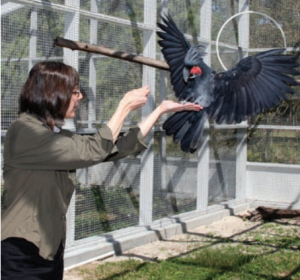
Susan G. Friedman, Ph.D., is a psychology professor at Utah State University. Over the last decade, she has helped pioneer efforts to apply to animals the scientifically sound teaching technology and ethical standard of Applied Behavior Analysis. Susan teaches two on-line courses, one for veterinarians and other animal professionals, and another for pet owners; and she presents crossspecies workshops around the world. Her articles appear on the Internet in 8 languages.
This article was originally published May 2008 in PsittaScene magazine.
© Copyright 2018 World Parrot Trust. All Rights Reserved.
